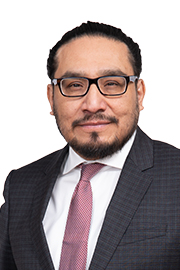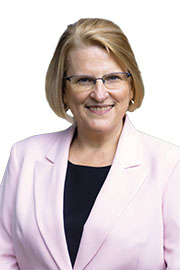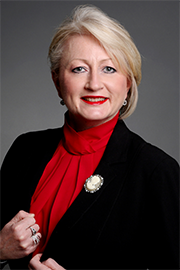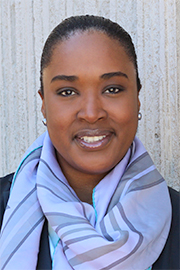- Oct/26/23 10:30:00 a.m.
Good morning, Speaker. Meegwetch. I’d like to acknowledge and welcome, from my riding, Chief Russell Wesley of Cat Lake First Nation; Caroline Lidstone-Jones, chief executive officer at the Indigenous Primary Health Care Council; Dr. Lloyd Douglas, public health physician for Sioux Lookout First Nations Health Authority; Reece Van Breda, council member for Sioux Lookout; Marie Drummond, Alliance for Healthier Communities; and finally, Allie Kinnaird from IPHCC. Meegwetch for coming.
- Hear!
- Rabble!
- Oct/26/23 11:00:00 a.m.
Thank you for the question—already on it. Our government is working with Indigenous partners, such as the ministry’s investment in 21 Indigenous primary health care organizations across Ontario, with sites both on- and off-reservation and delivering a wide range of services. We’ve invested $10.31 million in 2021-22 from the Ministry of Health to expand culturally safe and Indigenous-led mental health and addictions services for Indigenous people living on- and off-reserve.
In 2021, our government announced $1.5 million in annual funding to expand access to specialized mental health and addictions services in northwestern Ontario.
We’re getting it done.
- Hear!
- Rabble!
- Oct/26/23 1:50:00 p.m.
I move that, in the opinion of this House, the government of Ontario should adopt the recommendations of the official opposition report on the Indigenous determinants of health so that Ontario recognizes “Indigeneity” and “colonialism” as overarching and intersectional determinants of health across government ministries.
Speaker, I spoke to the leadership of Muskrat Dam after I announced this motion, and they told me that they need to declare a mental health state of emergency. There is an ongoing public health emergency and social crisis related to mental health and addictions in the 33 First Nations served by the Sioux Lookout First Nations Health Authority, also known as SLFNHA.
On September 5 and 6, 2023, an annual general meeting for SLFNHA chiefs was held. The chiefs in the assembly heard staggering statistics from the preliminary mental health and addictions report. According to data analyses completed by the Institute for Clinical Evaluative Sciences, or ICES, mental health and substance abuse health care utilization rates for Sioux Lookout-area First Nations band members residing on-reserve in any First Nation community in Ontario and off-reserve in Ontario are as follows:
In 2021, Sioux Lookout-area First Nations band members visited the emergency department services for mental health and addictions at a rate 14 times the provincial rate.
In 2021, Sioux Lookout-area First Nations band members visited the emergency department for intentional self-harm or risks of suicide at a rate of 16 times the provincial rate.
In 2021, Sioux Lookout-area First Nations band members were hospitalized for mental health and addictions at a rate six times greater than the provincial rate.
According to data from the Office of the Chief Coroner for Ontario, unnatural death rates in the Sioux Lookout-area First Nations are as follows:
The rate of unnatural death in the Sioux Lookout-area First Nations was 1.6 in 2021, 3.4 times the provincial rate and 2.4 times the national rate.
The rate of death by asphyxia-related suicide in the Sioux Lookout-area First Nations members is 15 times greater than the Canadian rate.
Asphyxia by hanging is a primary cause of unnatural death in the Sioux Lookout-area First Nations. It is determined to be the cause of 38% of all unnatural deaths between 2011-21 and the cause of over 70% of unnatural deaths among children 10 to 19 years of age during the same time period.
I’m just sharing these stats to quantify, you know, the desperate situation that First Nations leadership has to deal with on a daily basis. This crisis is devastating. It takes an enormous toll on their already limited human and financial resources.
The mental health crisis and addictions crisis stems from systematic racism and intergenerational trauma, and the continuing colonial violence embedded in the current federal and provincial health care systems.
The position of the chief states that the Sioux Lookout-area First Nations “will no longer accept processes that are founded on a program-by-program basis, whereby the governments off-load their responsibility while maintaining power and control over our people and organizations” and that those processes must be replaced with a whole-system approach that brings authority back to the First Nations people.
In addition to requiring immediate resources to address the current crisis, the communities served by SLFNHA deserve an equitable and comprehensive public health system to respond to the mental health crisis and other health and public health emergencies. This will allow for control over solutions to ensure that they are delivered in a coordinated, holistic and culturally safe manner to address the social determinants of health and mental health.
We know the health system does not work for Indigenous people. Some people say it’s broken, but it’s not broken. It is working exactly the way it’s designed to, which is to take away the rights of the people through their lands and resources. It is working exactly the way it’s designed to, which is to harm our people.
What I have shared about the public health emergency and social crisis related to mental health and addictions among the Sioux Lookout-area First Nations cannot be denied. It cannot be argued with.
I want to thank some of the advocates working on the front lines of health who see the realities in their work. One of them is Caroline Lidstone-Jones, the chief executive officer of the Indigenous Primary Health Care Council. The IPHCC has dedicated significant time and resources towards engagements focused on development of the more truthful and accurate Indigenous social determinants of health, which include impacts of colonization, impacts of racism, as well as protectant factors such as traditional healing and connection to the land, water, culture and other determinants.
We must ensure that patient-centered services, grounded in equity, are accessible to patients across the province. This motion presents an important and critical step towards recognizing and addressing factors that impact the health and the well-being of Indigenous people in Ontario. If we fail to recognize these determinants, we will fail to address them and ultimately implement solutions that can improve health outcomes and save lives. This government has an opportunity to ensure that this does not happen.
The IPHCC and its network of Indigenous primary health care organization members have developed a provincial Indigenous integrated health hub to ensure that Indigenous peoples are directly involved in the planning, design, delivery and evaluation of health services for Indigenous peoples in Ontario. This work involves collectively advancing Indigenous-led health care solutions across its network of members. This hub also involves working across the broader health system, including the public health units, the mainstream providers to understand and implement more meaningful Indigenous social determinants of health and to introduce accountability measures into the system to ensure Indigenous peoples have equitable access to safe and appropriate health services across the province.
I know that we must look at other provinces such as BC and their First Nations Health Authority, as well as examples within our own backyard such as health system transformation efforts led by the provincial-territorial organizations, Sioux Lookout First Nations Health Authority and the work of Indigenous primary health care organizations, to understand that factors impacting the health and the well-being of First Nations, Inuit and Métis people go beyond the determinants that have been developed through a predominantly Western lens without our input.
Sometimes it’s very difficult to hear stories. We talk about long-term care; our people, our elders have to leave their First Nations, their communities. They’re gone for good, and the only time they come back is when they come back in a box. That’s how colonialism works. And it is my hope that this government—and I trust that this motion will be adopted for further discussion and deliberation, and ultimately implemented across government ministries in Ontario, because the biggest room in the world is the room for improvement. Meegwetch.
- Hear!
- Rabble!
- Oct/26/23 2:10:00 p.m.
I am pleased to speak today on the private member’s motion 66. Since our government was elected in 2018 and throughout the COVID-19 pandemic, our government has shown an unwavering commitment to the health and well-being of the Indigenous people in Ontario. Our government’s goal is to improve the economic, social, health and well-being of First Nations across the province of Ontario. As the parliamentary assistant to the Minister of Health, I would like to emphasize that the ministry supports a wide range of Indigenous-led programs and services across Ontario which provide a high quality of care to First Nations, Inuit, Métis and urban Indigenous peoples, families and communities.
However, our government recognizes that health outcomes for Indigenous people are lower than those of other Ontarians. We acknowledge the pressing need to bridge existing disparities in health care outcomes, and we are dedicated to fostering a future where every individual, regardless of their cultural identity, receives equal access to high-quality health care.
The Ministry of Health continues to work with First Nations communities and the federal government through dedicated trilateral processes and relationship agreements to explore options to transform First Nations health. In 2022-23, the ministry approved over $2 million for five First Nations partners to support this initiative: Nishnawbe Aski Nation, Anishnabek Nation Union of Ontario Indians, Grand Council Treaty 3, Association of Iroquois and Allied Indians, and Six Nations of the Grand River. The ministry also partners with First Nations, Indigenous service partners and organizations across Ontario to engage their communities on important issues in the health care sector such as improving primary care, mental health and more. We have taken concrete steps to address these challenges, investing significant resources into Indigenous-led programs and services across the province.
Our government is working with Indigenous partners to improve Indigenous health outcomes through several key initiatives. We support Indigenous cultural safety training and Indigenous relationship and cultural awareness courses for the mainstream health care sector through the Indigenous Primary Health Care Council and Ontario Health, respectively. We are also working in partnership with Nishnawbe Aski Nation, Anishnabek Nation Union of Ontario Indians, Grand Council Treaty 3, Association of Iroquois and Allied Indians, Six Nations of the Grand River and the federal government to advance First Nations transformation and improve access to safe and effective health care services closer to where people live. Investments in Indigenous-led services are under way across all sectors, including primary care.
The ministry funds 21 Indigenous primary health care organizations across the province, with sites both on- and off-reserve that deliver a wide range of services. On June 20, I had the honour of joining my colleague the MPP for Cambridge for the opening of the SOAHAC, Southern Ontario Aboriginal Health Access Centre, in Cambridge, and we announced new base funding of more than $1.566 million to the SOAHAC for primary care access. During the tour, I had the honour of having a great conversation with an Indigenous nurse, and she spoke to me about how, as an Indigenous nurse, she approaches care for Indigenous patients. She’s also a teacher, to teach other nurses specifically Indigenous health care.
Also, the investments in Indigenous-led services include public health, seniors’ care, long-term care and mental health and wellness. Initiatives aimed at improving health outcomes for Indigenous communities have been infused with substantial financial support.
Firstly, our government is investing over $40 million in Indigenous-specific mental health and addictions programming through the Roadmap to Wellness initiative. This was a direct ask from Indigenous partners who see the need for these types of services to enhance the overall well-being of their communities.
Also, the Ontario government announced on October 10 that we are now offering more mental health services in every region of the province, through the expanded Ontario Structured Psychotherapy Program, the OSP. This program is to help adults across the province with mental health concerns connect to free cognitive behavioural therapy and other related services. The OSP Program and each regional network works with local Indigenous partners in all parts of Ontario to develop an approach to service delivery that best serves Indigenous communities. This program ensures that all Ontarians can now have more convenient access to mental health care closer to home. We know that this funding is essential to the development of culturally safe and Indigenous-led mental health and addiction services, both on- and off-reserve.
Additionally, we are allocating $90 million over three years, which started in 2021-22, through the Addictions Recovery Fund. These funds are being utilized for critical initiatives such as providing $4.2 million to the Sioux Lookout Friendship Accord group for addictions services and allocating over $3.8 million for new addiction treatment beds in Thunder Bay’s St. Joseph’s Care Group and Dilico Anishinabek Family Care. And we are investing in all corners of the province.
The government is also investing in the development of an Indigenous-led youth wellness hub, located in Sagamok Anishnawbek First Nation. This new youth wellness hub will provide culturally appropriate and safe supports to Indigenous youth between the ages of 12 and 24.
Furthermore, the emergency medical assistance team’s mental health response team maintains capacity to respond to mental health emergencies in First Nations and remote communities and continues to improve its self-sufficiency when deploying to remote communities—for example, for accommodations, meals, water etc.—to avoid utilizing resources from host communities. The emergency medical assistance team is staffed by paid volunteers who work in the professional health system.
The ministry continues to work with regional and local health partners to support First Nations who have declared social emergencies and who have requested provincial assistance. The ministry collaborates with Ontario Health, local health partners and the federal government to support communities.
In the realm of primary care, we are working closely with Indigenous partners to transform health care services. The ministry provides funding to the Indigenous Primary Health Care Council, the IPHCC, to develop strategies, tools and resources, including educational and training materials, to support Ontario health teams with meaningful Indigenous engagement, as well as encourage Indigenous providers and communities to participate in the Ontario health team process and the delivery of integrated care. Collaborative efforts have been supported by a substantial investment of over $2 million in 2022-23 for five First Nation partners.
Additionally, we are investing significantly in infrastructure and resources to address long-standing challenges. For instance, we have pledged $90 million for the construction and operational costs of the Mercury Care Home in Grassy Narrows First Nation. The ministry provides $1 million in annual funding to the Indigenous Primary Health Care Council for the delivery of an Indigenous cultural safety training program created specifically for individuals working in the health care sector. This facility will provide essential health services, programs and assisted daily living support, enabling community members to remain in their community for as long as possible.
In the critical area of safe drinking water, we are collaborating with First Nations communities and the federal government. While the Safe Drinking Water for First Nations Act has been repealed, we are actively working on a new draft proposal, focusing on the long-term sustainability of each community’s water infrastructure. The province is providing technical support and recommendations, reinforcing our government’s dedication to resolving long-term drinking water advisories.
To support these initiatives and investments, we have implemented robust legislative provisions, including the creation of Indigenous health councils. These councils are instrumental in advising the ministry about health and service delivery issues related to Indigenous people.
In conclusion, our government is taking action each and every day to create a future where Indigenous peoples in Ontario enjoy improved health outcomes and equitable access to health care. There is still much to be done, and we look forward to working with Indigenous and federal partners to improve health outcomes for Indigenous peoples in Ontario. Together with Indigenous leaders and partners, we are building a healthier, more equitable future for all.
- Hear!
- Rabble!
- Oct/26/23 2:20:00 p.m.
It is my honour to stand in support of the member for Kiiwetinoong’s motion to adopt the recommendations of the official opposition’s report on the Indigenous determinants of health. Racism is a structural and social determinant of health. This will unequivocally improve the lives of indigenous peoples and their communities across the province.
As the critic for women’s social and economic opportunity, I want to pay special focus to what this motion means for Indigenous women. In Indigenous cultures, women are held in a special regard in many Indigenous teachings and traditions. For instance, “To the Ojibway, the earth is woman, the mother of the people, and her hair, the sweetgrass, is braided and used in ceremonies. The ... Sioux people of Manitoba and the Dakotas tell how a woman—White Buffalo Calf Woman—brought the pipe to their people. It is through the pipe that prayer is carried by its smoke upwards to the creator in their most sacred ceremonies.”
It was through colonialism that this was gravely disrupted, as we continue to witness today in Ontario, in our communities, and across our nation.
To quote Indigenous author Paula Gunn Allen, “Since the coming of the Anglo-Europeans beginning in the 15th century, the fragile web of identity that long held tribal people secure has gradually been weakened and torn.”
Gender and gender identity have now been listed as social determinants of health in this country, because to identify as a woman is to have barriers placed in front of you from birth because of a sexist world. These are not inevitable, but rather socially constructed. They are also not felt equally, and few are also impacted by the joint forces of colonialism and patriarchy as Indigenous communities are.
We have called on Ontario to recognize gender-based violence as an epidemic. We’ve called on this Conservative government to do so. Our calls are often unheard.
Indigenous women know all too much about gender-based violence, sadly. Indigenous women are at least three times more likely to experience violence, and at least six times more likely to be murdered. While just 4% of the Canadian population identifies as Indigenous and as women, they represent 24% of homicide victims. Many of them are never found, never even looked for, leaving their families shattered and without closure. No day of significance, no database, no event in our communities will bring their sisters, mothers, friends, partners and loved ones home.
We need action, and we demand that action today: action like committing to enacting every one of the missing and murdered Indigenous women and girls report’s 231 individual calls; action like saying yes to my colleague’s motion, a systemic approach to doing better by placing Indigenous self-determination at the centre and by recognizing Indigeneity and colonialism as overarching—I want to say it again—overarching and intersectional determinants of health across government ministries and across every political group. These need to be recognized as the facts that they are.
Thank you, Sol. Thank you for this motion. I support it wholeheartedly.
- Hear!
- Rabble!





